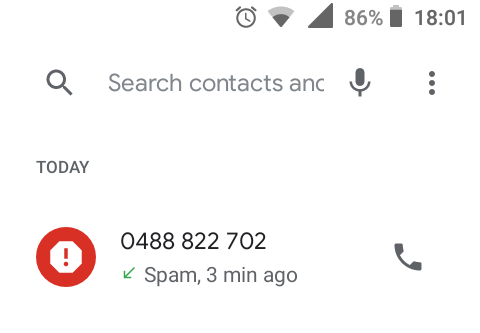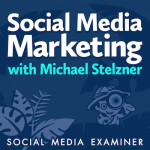Finding the true worth of social
Have you ever sat back and said “I don’t get how social works for my business” or are you doing social and thinking “This is pointless” only to read every second day how people are building empires from social media exposure for their business?
Meeting as many business people as I do, especially men and women in their late 40s through to their mid 60s I often see and hear how they just don’t think social is doing anything for their business.
Sometimes, we will be engaged by a client for social whom we know will leave us after 6 months and question our role and the role of social at all in their business.
We have a wide array of processes in place to try and educate customers on the role of social, the realities of undertaking it, the commitment required to do it well and the potential outcomes for their businesses over time, but often despite all this our customers (a certain, small percentage, mind you) will leave and feel they got nothing out of their investment.
You may be thinking it is unusual for one to be so honest about a failed business relationship, but it is this approach that typifies how social works: being genuine and informative and I think there are lessons to be shared and learned by showcasing failure not merely success.
And as Henry Ford says failure is simply the opportunity to begin again, this time more intelligently. Which is why each time we have a disappointing or failed experience with a client we further refine our offering to offer and even better service to our current an future customers.
So our success on any project often comes down to a combination of factors, some as an agency we can influence, others we can’t. But here are some are three key factors to consider when looking to find success sin social:
- Content
- Time
- Tracking
Content – MAKE IT GREAT – CREATE MOMENTS
One of the greatest mistakes brands/businesses make with social is they merely take their approach to promoting their products/services and plonk them on a social platform.
Social media is NOT an advertising medium in the traditional sense. Yes, people advertise there, but what really gets followers engaged is thoughtful and interesting content.
People in the social environment want to be entertained, intrigued and delighted but above all followers want genuineness… and it is that aspect of social, businesses fail to understand.
Successful brands in the social space don’t just “Brand” content, their content exemplifies their brand, its values, its approach and therefore it speaks clearly not merely about the products or services they sell, but why the brand exists and whom they exist for.
If you take a look at Red Bull for instance their content richly reflects their brand and appeals to those who identify with the more extreme… and if not those who necessarily live that life, at least those who aspire to add a little more excitement to their day. It isn’t about the product itself but the “lifestyle” the drink fits into.
A brand I have worked on – Maccona also has a hugely successful social following, and their content is all driven around the core idea that Maccona (the product) provides its drinkers with a moment of escape, through the taste, through the ritual of having a coffee. So, their content is formulated to provide a similar and simple moment of escape online.
Now these are both beverage brands and when I showcase these examples to customers (not in the Fast-Moving Consumer Good Space – FMCG) they often refute their ability to achieve this when their product or service is so much more utilitarian or generic.
And my argument is simple That is Bullshit.
Sure, your business won’t produce content that emulates Red Bull or Moccona, but there is no good reason why your brand/business can’t make content in the social space that is authentic to your brand and provides genuine engagement for your customers.
So, what is an example. Well if you haven’t followed the NSW police – check it out. Now I reckon the cops have a pretty tough sell on their hand with enforcing the law…. And let’s face it the “constabulary” don’t always have the easiest brand position either. But some of their stuff is pure gold.
Or what about mailchimp. Let’s face it mailchimp sells the ability to send emails to customers and its one of hundreds of similar products. It’s far from sexy, and as a facilitator who exists in a highly price sensitive environment – what could this brand really do to be “social”.
Mailchimp have done three things that I think are very clever for such a pragmatic product.
- In the social space they have taken a very pragmatic approach, their content is typically designed to give real working examples of how to maximise the effectiveness of your communications and in turn they seek to showcase the ease of use, not to mention how to maximise the outcomes using their platform.
- They have been consistent in their approach with regular posts across platforms both in terms of frequency and content.
- They have spent time and continue to invest in a brand identity (visual style) that goes beyond their logo and underpins the way they present their social communications.


This visual style is clever and recognisable and something that not many brands bother investing in. This isn’t just content it is content that is branded both in terms of the strategic approach as well as the ongoing content presentation.
There’s a lot we can learn from these brands, these are not funky products, not emotive brands and yet they have found a way to show their personality despite having boring businesses. They’ve produced genuine content that reflect their brand on social media which keep users alert to their future posts but also keeps their brand front of mind which will allow you to get more followers, build engagement, and grow your business, but let’s be honest to make all of this happen and build a solid following will take…..
TIME – ROME AND A SOCIAL FOLLOWING – BOTH WEREN’T BUILT IN A DAY
Building a social following for a retail fashion brand like Boohoo or The Iconic can be rapid and the numbers of followers, sharers and buyers – massive. Again, not every business will have this same ability. So, understanding your business and your customer is vital in determining how many followers you want and having a plan for how long it might take to reach them is just as important.
What is also important in determining the time investment required for your social presence is the latency of your sales funnel/process. For example, if you sell cheap holidays the time between posting via your social channels and seeing a sales response may be a mere matter of days, but if you are selling large mining equipment it may take an extended and ongoing effort to see conversions from social.
In some respects, however your regular sales process should give you some indication around this, so if you do sell heavy machinery don’t expect to put up a post on Linked In once and sell a 1000. Expect it to take some time to build, we suggest that to properly target and build an engaged social following will take a minimum of nine months and up to 18 months before certain business types will see results begin to flow.
But how do you know?
TRACKING – SOCIAL SHOULD BE TRACKED – IT’S NOT JUST FOR FUN
This is a big one – And socially savvy businesses consider this often long before they even make a post. How you track success and how you track sales through your social media initiatives are vital to the process and how you seek to measure this will vary business to business and product to product.
Ultimately, investing in systems that track sales and the channel from which they were derived is one thing, but if your business doesn’t have robust digital systems in place, then try simple things like unique URLs, pricing or promotional codes that can help your sales teams track sales coming from your social channels specifically.
This really is very important because, as an example, we worked with a client once who saw a 15% uptick in sales in six months after investing in social with us. We asked them if they could see the correlation between our social campaign and their sales increase. And their response was “no one has specifically said they found us through social, so we are no sure this is working”.
As an agency, there was only so much we could track the performance (within the scope of the brief), so whilst we could see and share from the analytic data showing the increased traffic to the website, see the increase in online enquiries and they reported the subsequent increase in sales Without the client actually finding out where customers found them, we couldn’t close the loop in regard to the effectiveness of the work.
Which brings me back to the crux of this article. Why do some of our clients fail to see value in social?
I think it is often a lack of understanding of one or each the above key factors and the effort that each takes in tandem to find success. Whether you are executing your social in-house, by yourself or with an agency partner you really do have to be invested; invested in the idea of creating meaningful content, invested in the idea of being patient and giving your social initiatives time to work and invested in the systems and processes to track its performance.
As an agency who helps business with social, what I can tell you is whilst our talent at producing great content and managing the complex nuances of each platform is what we pride ourselves in, what makes a truly great relationship and delivers the best outcomes in social is when the client is truly invested in the outcome and knows why social is important for their business.
Give us your feedback – Why is social important or not important to your business?
 Listen to our podcast episode on budgeting here
Listen to our podcast episode on budgeting here






















